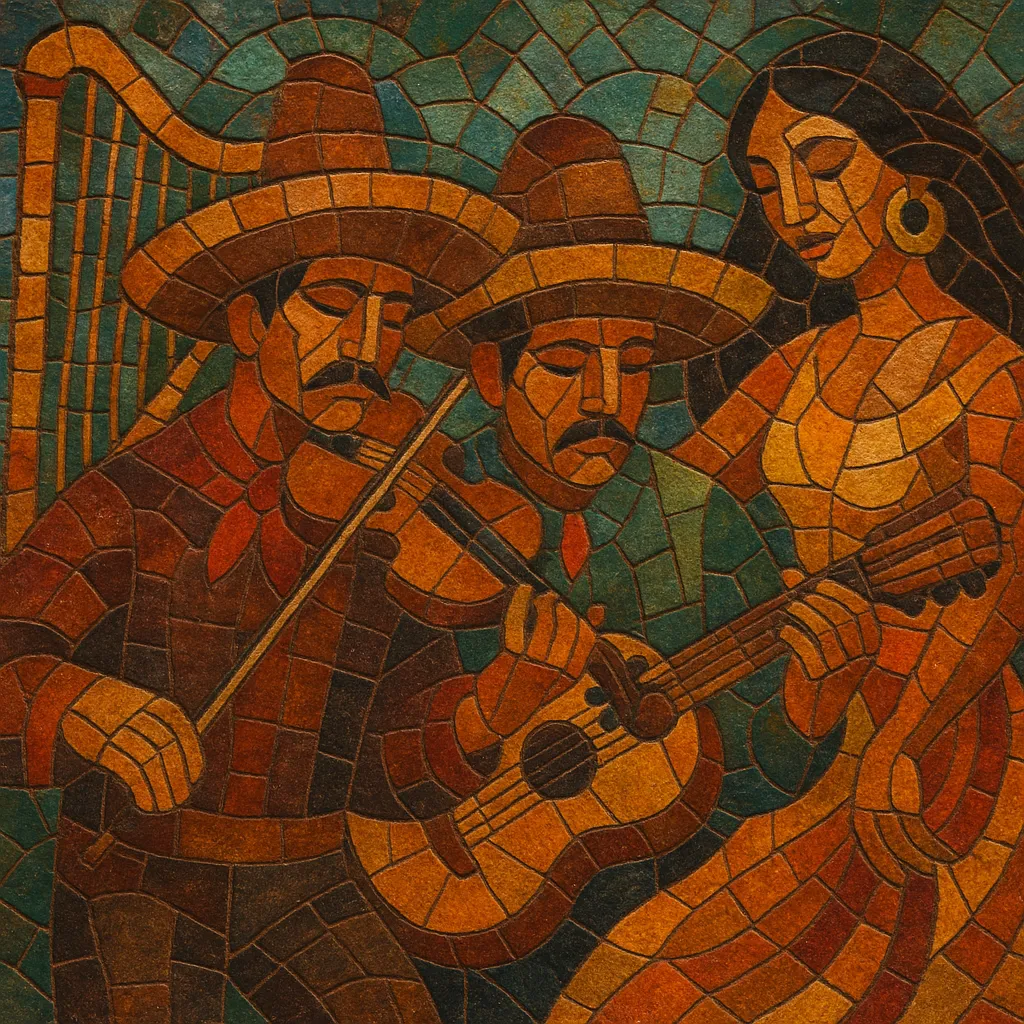Mexican folk music is a broad family of regional styles that fuse Indigenous, Spanish, and African diasporic elements into song forms meant for dance, celebration, storytelling, and community ritual.
Across Mexico’s regions, “sones” (e.g., son jarocho, son huasteco, son calentano) feature strummed small guitars, violins, harps, and percussive zapateado dance on wooden platforms. Northern traditions absorbed 19th‑century European partner dances (polka, waltz, mazurka, schottische), while central‑western ensembles developed the mariachi sound with vihuela and guitarrón (later trumpets). Narrative corridos chronicle heroes, history, and everyday life.
Typical rhythmic feel often centers on sesquiáltera (hemiola) interplay between 6/8 and 3/4, bright strumming patterns, call‑and‑response singing, and copla or décima poetic forms. Melodies are largely diatonic, frequently ornamented, and supported by parallel thirds and sixths on strings or violins.
Spanish colonial society brought Iberian song forms (fandango, copla, romances) and stringed instruments that blended with Indigenous musical practices and African diasporic rhythm from coastal and mining regions. By the 18th–19th centuries, regional “son” traditions (Veracruz, Huasteca, Tierra Caliente, and others) were well established, with sesquiáltera rhythms, improvised verses (décimas), and community fandangos.
European partner dances—polka, waltz, mazurka, schottische—swept Northern and Central Mexico, shaping the repertoire of village bands and string groups. The corrido flourished as a narrative ballad during political upheavals and frontier life, recounting events, heroes, and cautionary tales.
Mariachi ensembles from Jalisco consolidated instrumentation (vihuela, guitarrón, violins; trumpets later) and repertoire, while son jarocho and son huasteco gained urban visibility. Radio and the Golden Age of Mexican cinema (1930s–1950s) popularized folk-derived genres nationwide, turning ranchera singing and corridos into national symbols.
Scholars, community musicians, and ensembles like Los Folkloristas preserved and circulated regional repertoires. Workshops and festivals (e.g., son jarocho fandangos) revitalized intergenerational transmission. Folk idioms informed singer‑songwriters and social song movements, while regional styles continued to evolve alongside migration and cross‑border exchange.
Grassroots scenes sustain traditional dance gatherings, luthiery, and local pedagogy. Artists modernize production while retaining core poetic and rhythmic vocabularies. Mexican folk music remains a living matrix for regional identity and a foundation for contemporary “regional mexicano,” norteño, and cross‑genre fusions.


